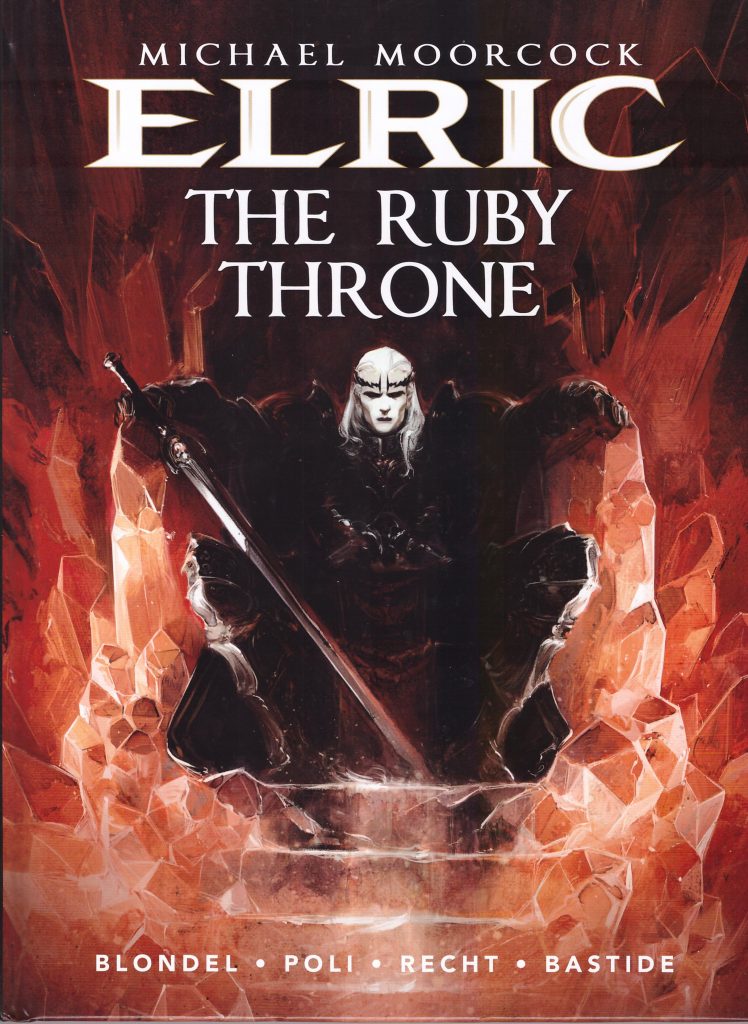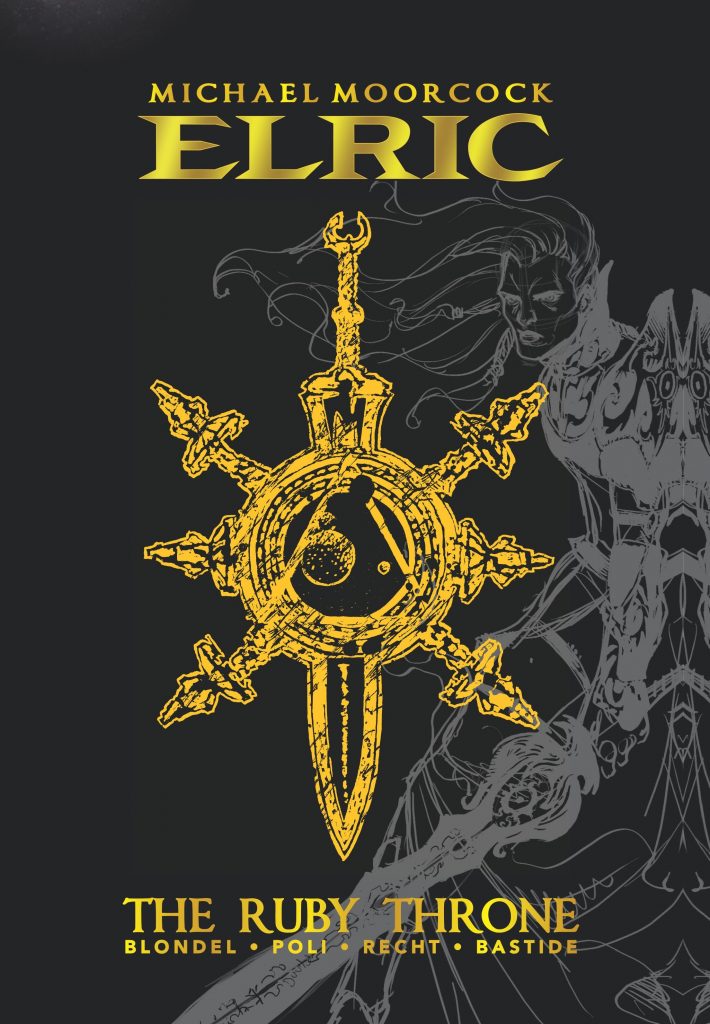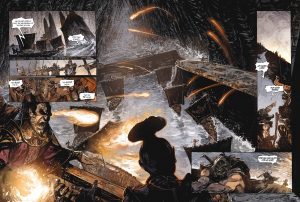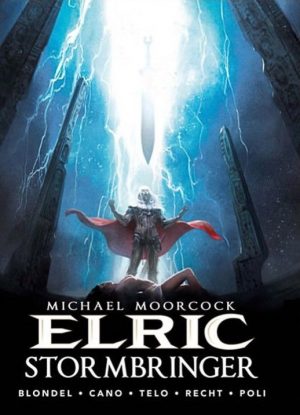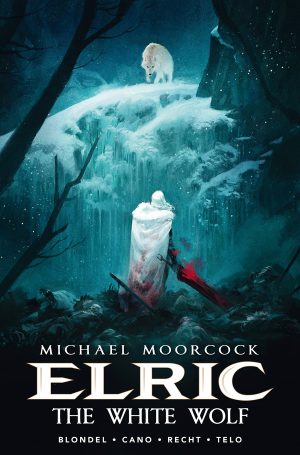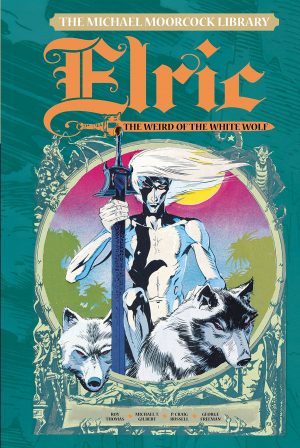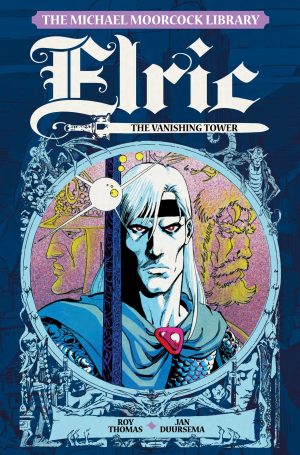Review by Frank Plowright
Considering the number of times Elric’s adventures have been adapted for comics, it’s reasonable to ask what creative purpose a new adaptation serves. It’s answered before the story begins, by Michael Moorcock, who considers this to be the best adaptation of his Elric works, crediting Julien Blondel with making improvements that had he conceived them at the time he’d have included in the original material. Endorsements don’t come any more ringing than that. Moorcock’s introduction goes on to relate precisely why The Ruby Throne works so well, casting Elric’s Melniboné as analogous to the British Empire, festering in a corrupt entitled decadence.
Very unusually for what originated as a European album, the art is a pencil and ink collaboration, with the slickness of Didier Poli’s pencils given a rougher than usual edge by Robin Recht’s inking. It’s Poli’s designs that divorce this Elric from previous versions. He’s not constricted by the puritanical American attitude toward naked people, so can be imaginative with the casual cruelty introduced as the hallmark of a society that’s been an absolute power for ten thousand years, and everything about Melniboné is presented to a vast and lavish scale. The various character designs are notably removed from those of previous American artists, costumed and chilling, with Elric himself the closest to earlier versions, having the same frailty and look P. Craig Russell managed to convey.
Elric is a hereditary ruler, but some among the nobility can barely conceal their contempt for his seeming lack of power, with his cousin Yyrkoon the boldest of them, publicly doubting Elric’s ancestral ability to call on the Gods. Elric is not only tormented by undefined illness, but by a tedium with the responsibilities of the ruler, not yet the hero considering his entire society is constructed on false foundations and needs a thorough overhaul. When Melniboné is first infiltrated by spies, then attacked by an invading fleet, it signals a time of upheaval and Elric must decide where his loyalties lie. As characterised by Blondel he may be beset by doubt, but he is of his city, and while considered weak by the dogs of war within, he’s still portrayed as capable of casual cruelty and self-interest, and no previous graphic novel has brought this out as well.
An alternative version of The Ruby Throne is also available via Titan, adapted as Elric of Melniboné, perhaps not as visceral, but equally noteworthy. What is obvious, however, is how this version uses the art to inform, sacrificing Moorcock’s words while retaining his vision. Blondel’s journey with Elric continues with Stormbringer.
Titan have also issued a Deluxe Edition, oversized for better appreciation of the art, featuring a four page interview with Moorcock about Elric, and an article about his origins. These are in addition to the process sketches and explanatory material in the standard edition.
